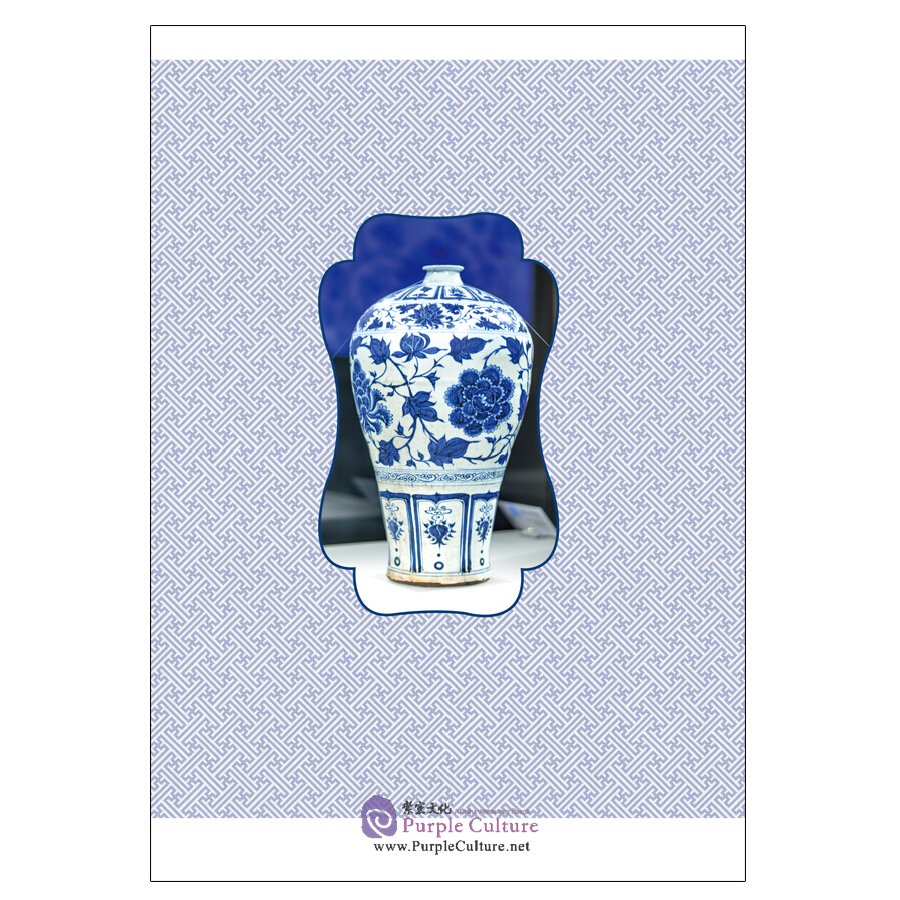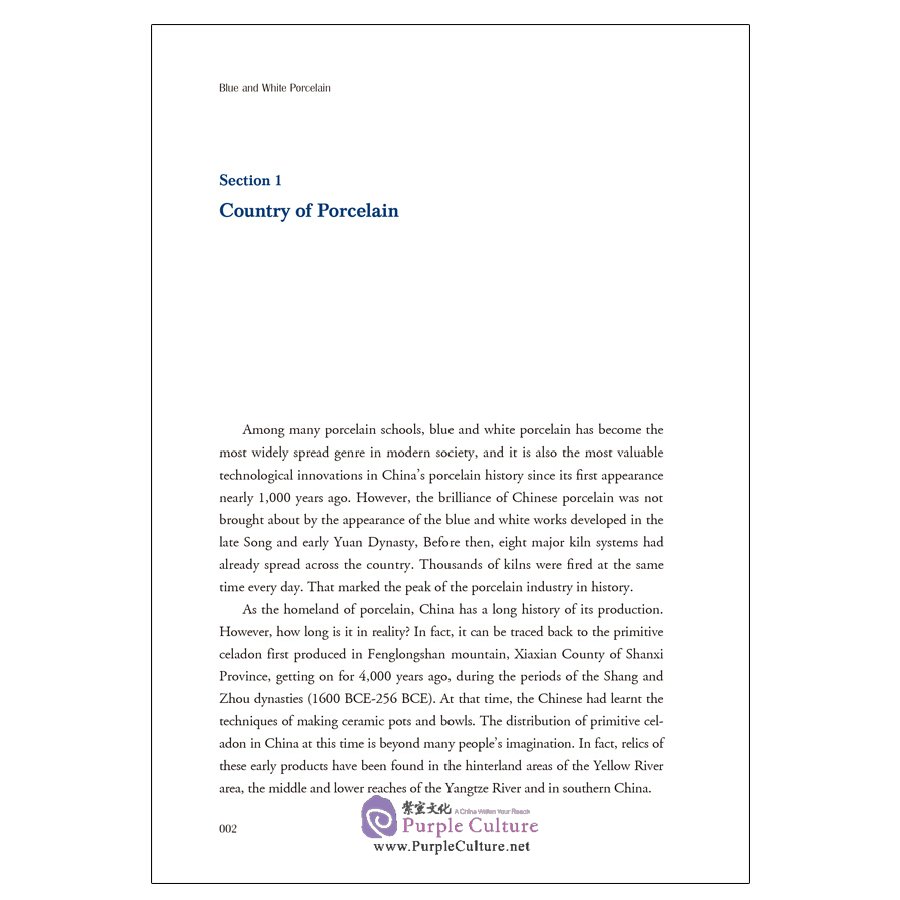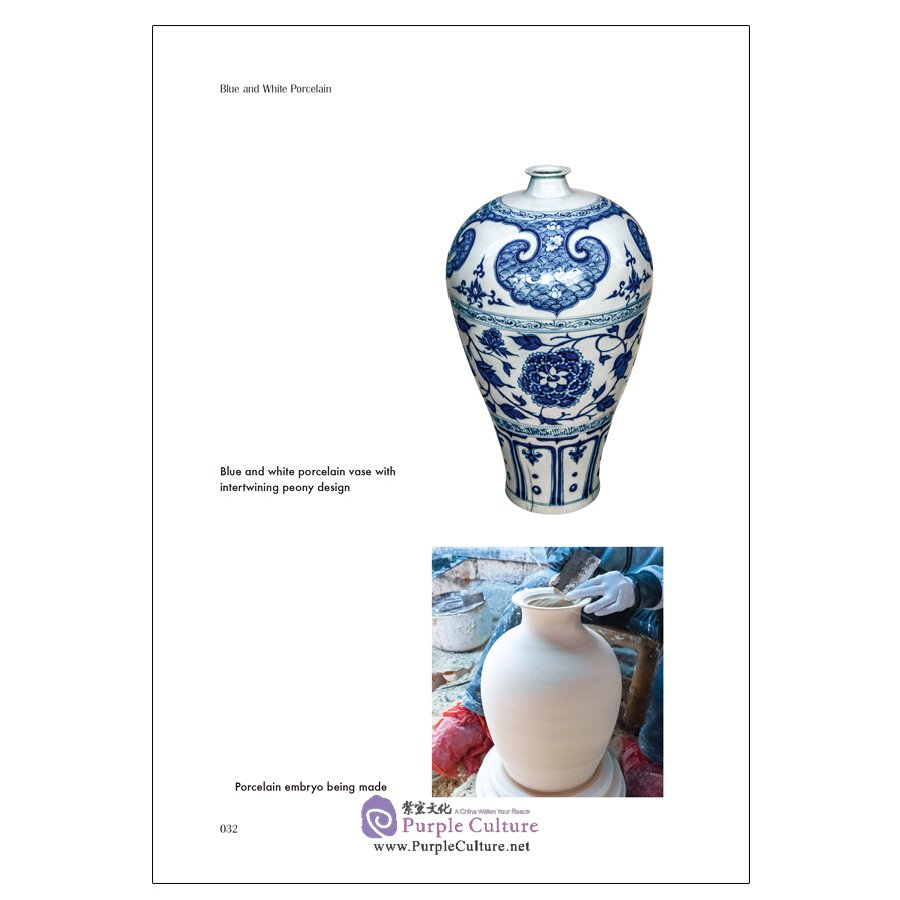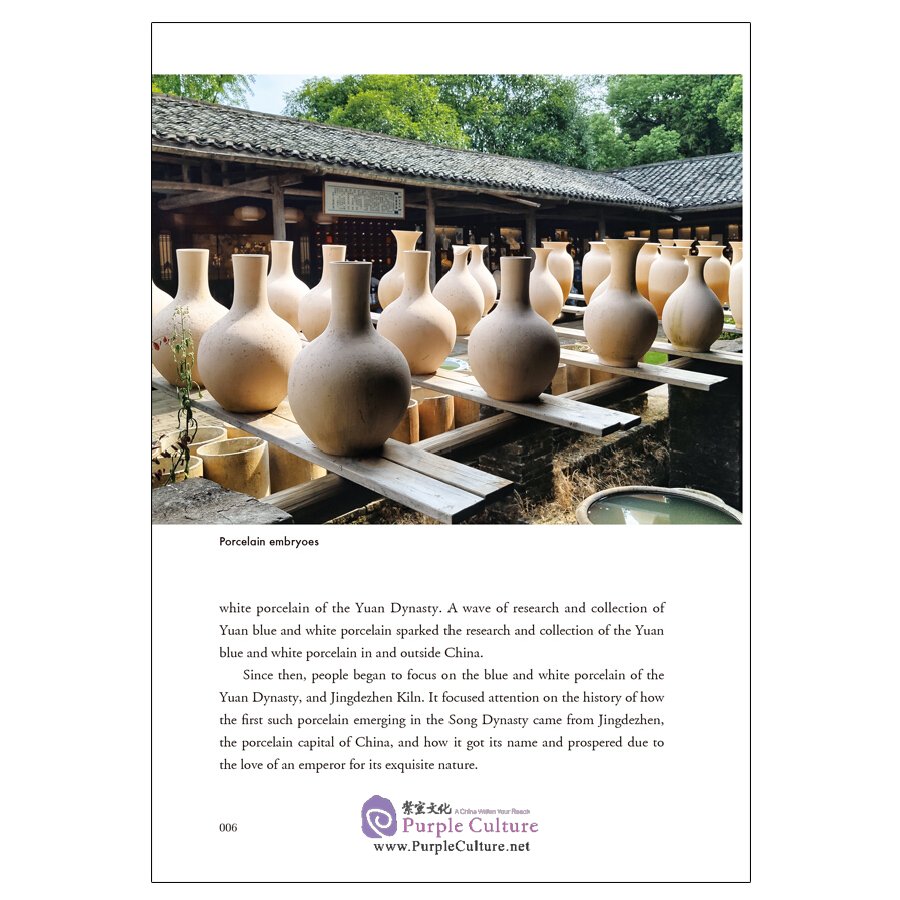Sample Pages Preview




 Preface
Preface
“Waiting for misty rain and a blue sky.” The melodious tribute to Blue and White Porcelain reminds us of the much-treasured ancient porcelain of China, still in high demand today. In the Song Dynasty (960-1279), a ??ne porcelain piece emerging from the Ru Kiln (in Ruzhou of Henan Province) was quickly dispatched to Emperor Huizong, known for his love of such quality porcelain. He wrote: “The color is just coated in days after the rain.” During the next three dynasties—Yuan (1271-1368), Ming (1368-1644) and Qing (1644- 1911), from the secondary formula of kaolin ceramic clay found in Jingdezhen of Jiangxi Province during the Yuan Dynasty, blue and white porcelain reached its peak in the reign of Ming Emperor Xuande (1426-1435). In the Qing Dynasty, blue and white porcelain was inherited and further developed, but the bottom color remained blue on a white background.
The history of blue and white porcelain is closely tied to changes in Chi- nese history and the continuous cultural development of the Chinese people. No matter how it changed, it remained inseparable from the daily life of both emperors and the common people. Blue and white porcelain tea pots and cups, bowls and tableware for daily life, inkstones on the desk for the production of beautiful calligraphy, and the most treasured possession of collectors all formed part of this particular genre of ceramic art. All of the works that have been passed down through history feature efforts of potters to further re??ne and per-fect these beautiful works. Examples include the orange peel veins of Ming Em peror Xuande’s reign (1426-1435), chicken bowls and cups of Ming Emperor Chenghua’s reign (1465-1487), the twelve ??ora cups of Qing Emperor Kangxi’s reign(1662-1722), and the colored enamelware of Qing Emperor Qianlong’s reign(1736-1796). These were the products of numerous dedicated artisans.
Jingdezhen is a famous porcelain town closely related to the birth and development of blue and white porcelain, which could be found in streetside shops and pubs, in today’s exhibition hall, buried in the earth or lying on the seabed after shipwreck unspoiled, cherished by the inheritors of the 72 process- es involved in the wares of Jingdezhen. As each generation passed, new artisans emerged to keep alive a cherished tradition to this day.
People who have never been to China must have seen and even have used Chinese porcelain. In English, both porcelain and china were used to refer to such products. However, in the minds of many people, the former word should only refer to the special blue and white porcelain. This is one of the most daz- zling creations of Chinese porcelain art. In addition, Chinese folk porcelain masters have also created many exquisite blue, white, black and colored por- celain works, all exercising their own fascination and commanding high prices when they come up for auction around the world. However, this wasn’t always the case. Toyotomi Hideyoshi, 16th century Uni??er of Japan once waged a war on porcelain, Augustus the Strong, Elector of Saxony imprisoned alchemists who sought to make ceramics in the 18th century. On the other side, there was a Queen of Sweden who established a special collection room for ceramics, and many pirates made their fortunes by hijacking the merchant ships fully loaded with chinaware destined for foreign markets, especially in Europe.
It is time, therefore, to examine the history of blue and white porcelain and its role of world signi??cance.




